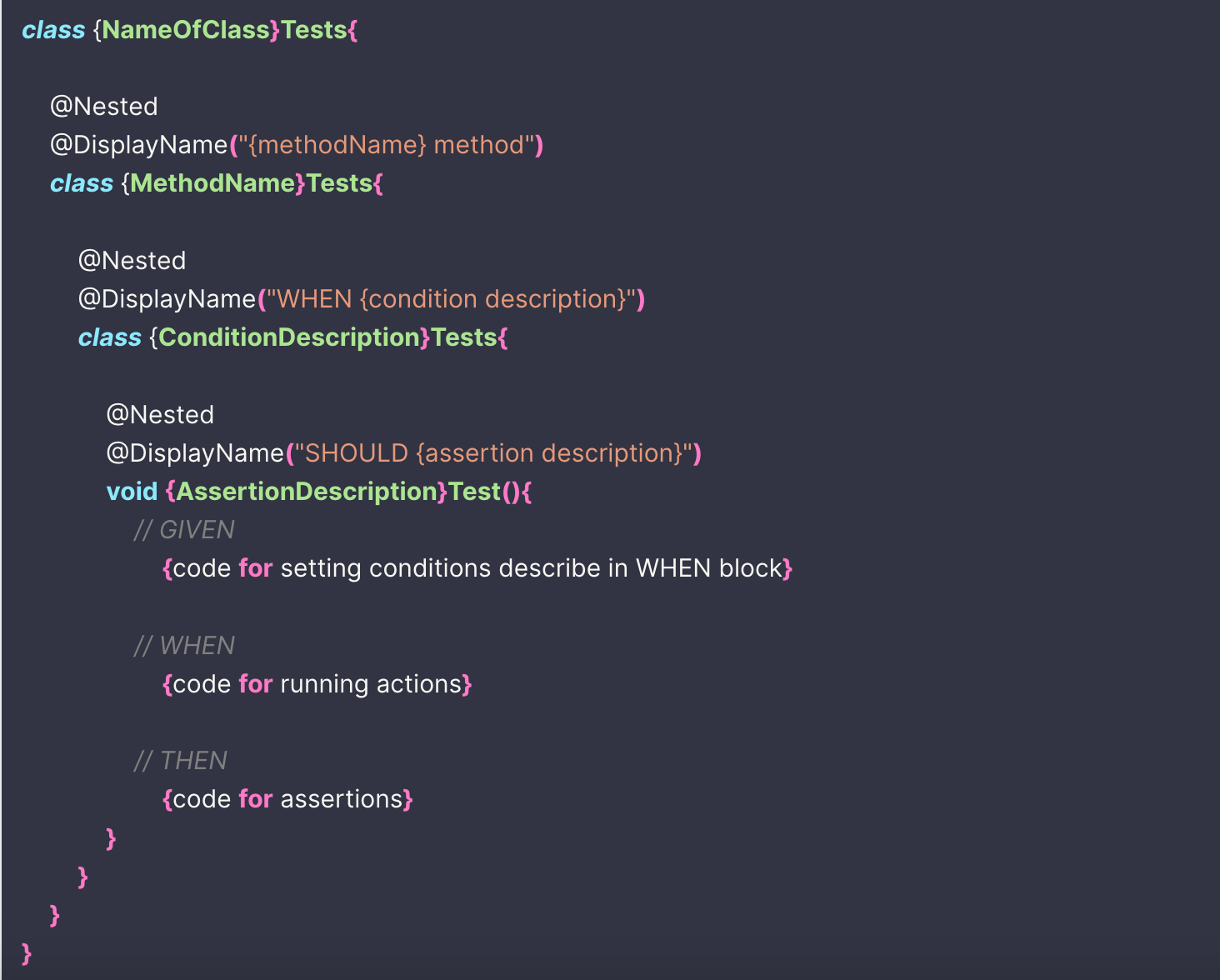· 2 min read
Thinking and writing cleaner tests with method/when/should blocks
A template for thinking and creating understandable uniform tests

Problem Description
Often tests code style is ignored. Having different test writing styles makes it harder to write quality tests. Tests quality is as important as code. This post explores a effective template I developed to help write cleaner tests and keep them uniform.
method/when/should blocks
there are 3 main blocks. each block in nested within parent block.
- method block
- WHEN block
- SHOULD block
- given/when/then mini-blocks
- SHOULD block
- WHEN block
method block: is name of method. all tests related to a particular method will be within this block.abstract
WHEN block: describes the condition over a method.
SHOULD block: describes the assertion.
GIVEN/WHEN/THEN mini-blocks: helps keep tests clean
You may have noticed WHEN, SHOULD and AND are capitalized. This is by design. This helps highlight logic.
Examples
1 - We are creating a method which inserts new value if id does not exists in database else updates existing value.class
- upsert method
- WHEN value exists
- SHOULD update value
- WHEN does not exists
- SHOULD insert new value
- WHEN value exists
2 - We have a UI components which should message “No Content” if data items is not present. Else it shows a list of item names
- displayItems method
- WHEN data is not present
- SHOULD display “No Content”
- WHEN data exists
- SHOULD display list of item names
- WHEN data is not present
Benefits
method/when/should block is perfect companion for TDD, is language agnostic and can be easily used with templating features like IntelliJ’s live template.
Having specific blocks means that test descriptions are always written a certain way. This clarifies thinking and makes sharing and understanding easier.
Blocks group tests together, making them easier to find.
Also, when tests run in IDE like IntelliJ, the output is much cleaner. The example section above is a good representation of this.
Template for JUnit
class {NameOfClass}Tests{
@Nested
@DisplayName("{methodName} method")
class {MethodName}Tests{
@Nested
@DisplayName("WHEN {condition description}")
class {ConditionDescription}Tests{
@Nested
@DisplayName("SHOULD {assertion description}")
void {AssertionDescription}Test(){
// GIVEN
{code for setting conditions describe in WHEN block}
// WHEN
{code for running actions}
// THEN
{code for assertions}
}
}
}
}Given, When and Then are mini-blocks. The code will be written after an tab intend.
More extentions
AND block: Describes more conditions for WHEN block.
Usage:
- WHEN a condition
- AND another conditions
More SHOULD Blocks:
- SHOULD-NOT
- SHOULD THROW
- SHOULD-NOT THROW
- SHOULD CALL
- SHOULD-NOT CALL